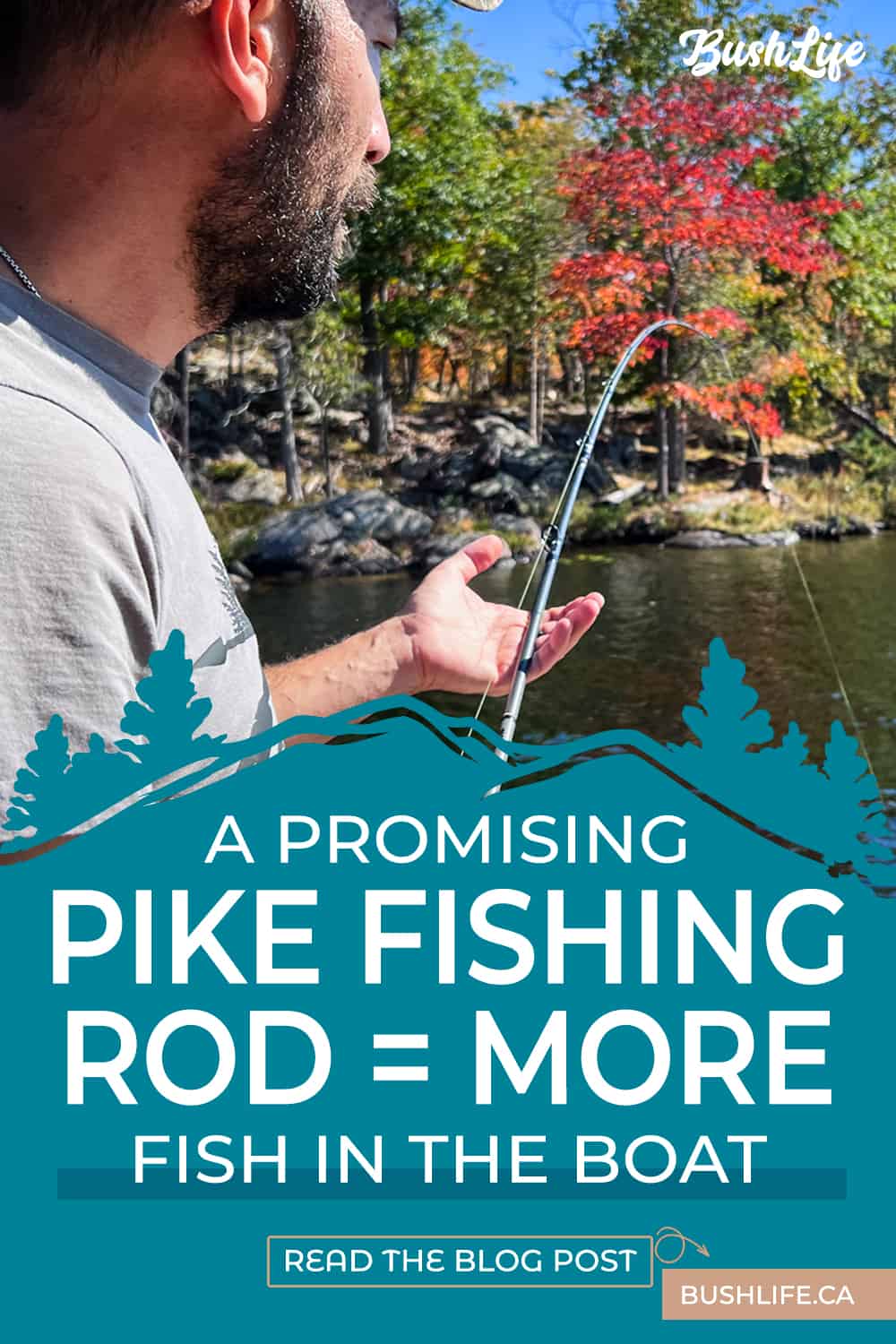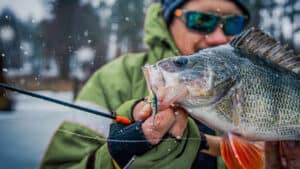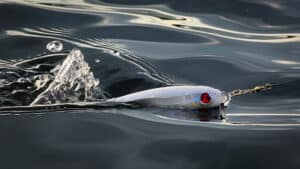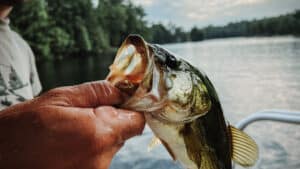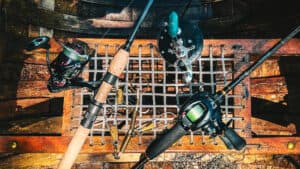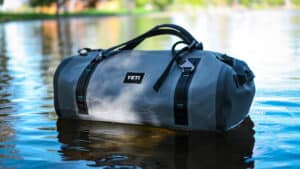Yes, sir or ma’am, you read that right! There are fishing rods dedicated to pike fishing, specifically, the Caperlan WXM-5 220 H pike fishing rod, which we are reviewing today. What’s more, some of those very qualities that suit pike can double for muskie or even that giant bass you always dreamed of landing! But wait, there’s more! Big equipment (Ie. Big price tag) doesn’t have to break the bank! If you like fishing in any way, shape or form, I know I have your attention! So, let’s get started, as there’s a pleasant surprise coming your way.
Discloure: Posts may contain affiliate links. Purchases made through our links result in a small commission to us at no charge to you. We only recommend products that meet our brand standards based on testing and first hand use by our authors.
Rod Specifications
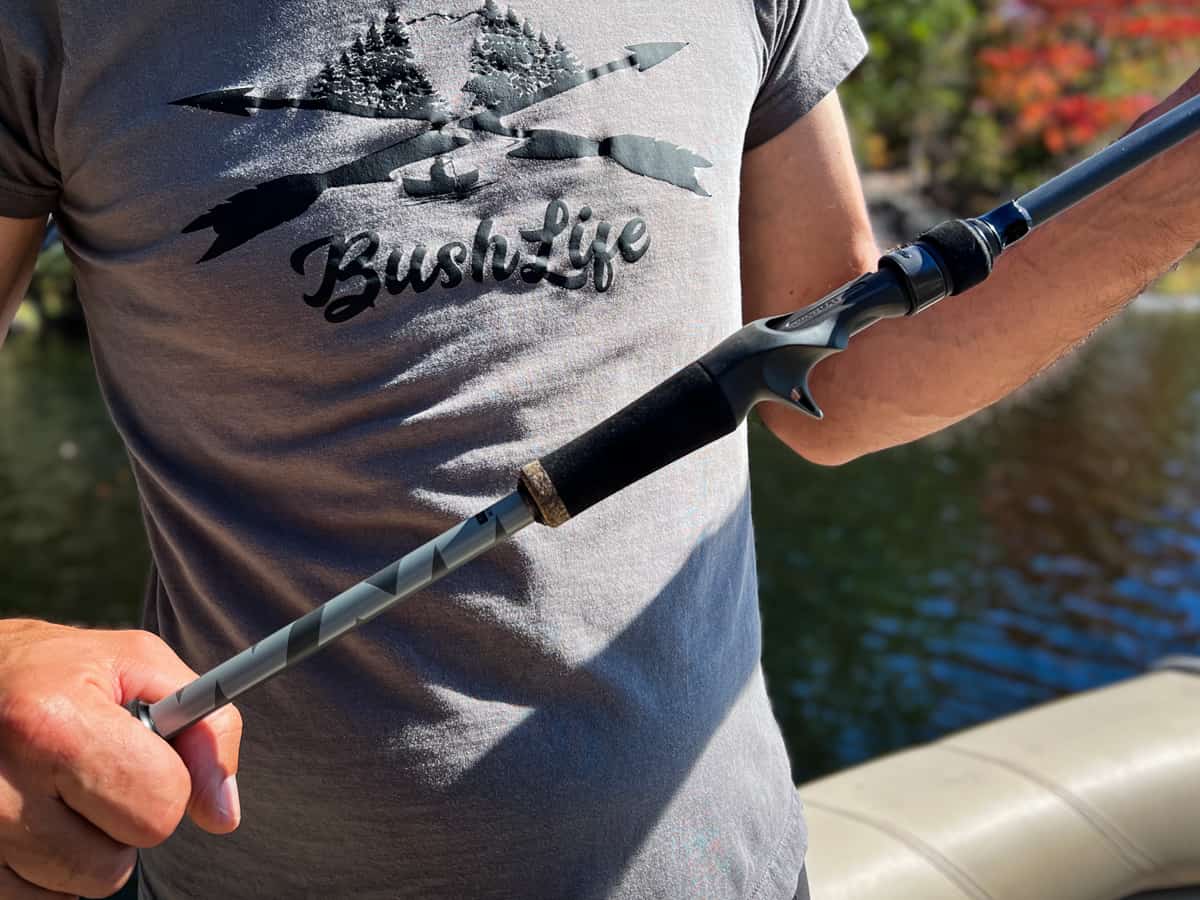
Just in case you didn’t know, Caperlan is the fishing brand of Decathlon. It’s not as flashy or well-known as the usual household names like Shimano, Daiwa, Abu Garcia, Quantum, Zebco, etc. But I have to admit there are a lot of pleasant surprises in this pike rod that can place it right up there with its traditional competitors. The only exception is that it’s at a fraction of the cost!
Now, specs are usually boring. They are also found right on the manufacturer’s website, so it’s one of those things we usually skim over on a review – but not today! Let’s, look at them carefully to understand what these specs mean and why they’re so significant for a pike fishing rod. And later, we’ll adapt those same specs to muskie and bass.
Materials
100% Carbon Fiber, specifically Korean carbon
Traditionally, fishing rods were made of fibreglass. And, no, it’s not a history lesson, so we won’t talk about wooden rods as that’s ancient.
Fibreglass fishing rods, and they still exist today for a reason, were usually heavy and bulky. They were also “bendy”. The proper term here would be that they have more of a parabolic curve when weight is applied. Ie. More of the whole rod bends versus the tip, which can be great for certain types of fishing lures, like crankbaits. But it’s not ideal for big fish when you want your rod to have a lot of backbone.
Thank the fishing gods that, at some point, carbon came along! Carbon rods can be super light while being really stiff. Noteworthy here, this is all done without adding a ton of material to the rod blank. It revolutionized the industry.
The Caperlan WXM-5 is 100% carbon. As such, it comes in super light at 139 grams. That’s especially pleasant for a beefier rod that is 7′ 2.5″ long. It also has a modern and refined feel to it. Dare I say it, it’s kind of sexy – if this language can be applied to fishing gear like it is to cars.
Power, Action
Heavy Power, Fast Action, 1-2.1 OZ Lure Weight
Power
We measure fishing rods in terms of “power.” Some of the more popular ones are medium, medium-heavy and heavy. The higher the rod’s power, the more force it takes to bend it, so naturally gearing for pike, we ordered the heavy power rod for this review. There is, of course, extra heavy, but casting distance greatly suffers on rods this stiff.
Action
Action is where the fishing rod bends when weight is applied. A super popular choice is a fast-action rod, as is the case here. Fast-action rods really suit topwater fishing lures, frogs and so on. Remember frogs, we’ll get back to this one later. Topwater fishing also happens to be my preferred method for pike, muskie AND bass fishing!
For the record, a medium or moderate action is better suited for lures like crankbaits. The extra give means the difference between yanking a crankbait out of a fish’s mouth before it bites the lure. But there are plenty of people pulling cranks on a fast action.
Lure Weight
Power and action can often be confused, but they are vastly different specs. They also help determine suitable lure and line weights for the rod. In this case, a 1 to 2.1-ounce lure which is pretty big. And bigger fishing lures = bigger fish! At 2.1 ounces, this rod can handle quite a few muskie lures, let alone pike.
Further Reading:
Fishing Basics, where we cover just about everything the budding angler needs to know
Reel Seat and Guides
Seat and guides will be the last items we’ll cover in the specs department before moving on to the juicy stuff. It’s important, so we can’t skip it.
Fishing rods can easily range from $100 to $300 to even $1,000. What changes (or rather is supposed to) is the rod’s ability to transfer vibration back to your hand! This vibration helps identify bites versus weeds, cover, bottom, lure action, etc. The reel seat is particularly important in this task.
Fuji is the industry leader concerning reel seats, so I am beyond happy to find a Fuji ACS reel seat, and Fuji K Fazelite® R Concept guides on this rod. It instills immediate confidence in the rod’s quality, abilities and longevity.
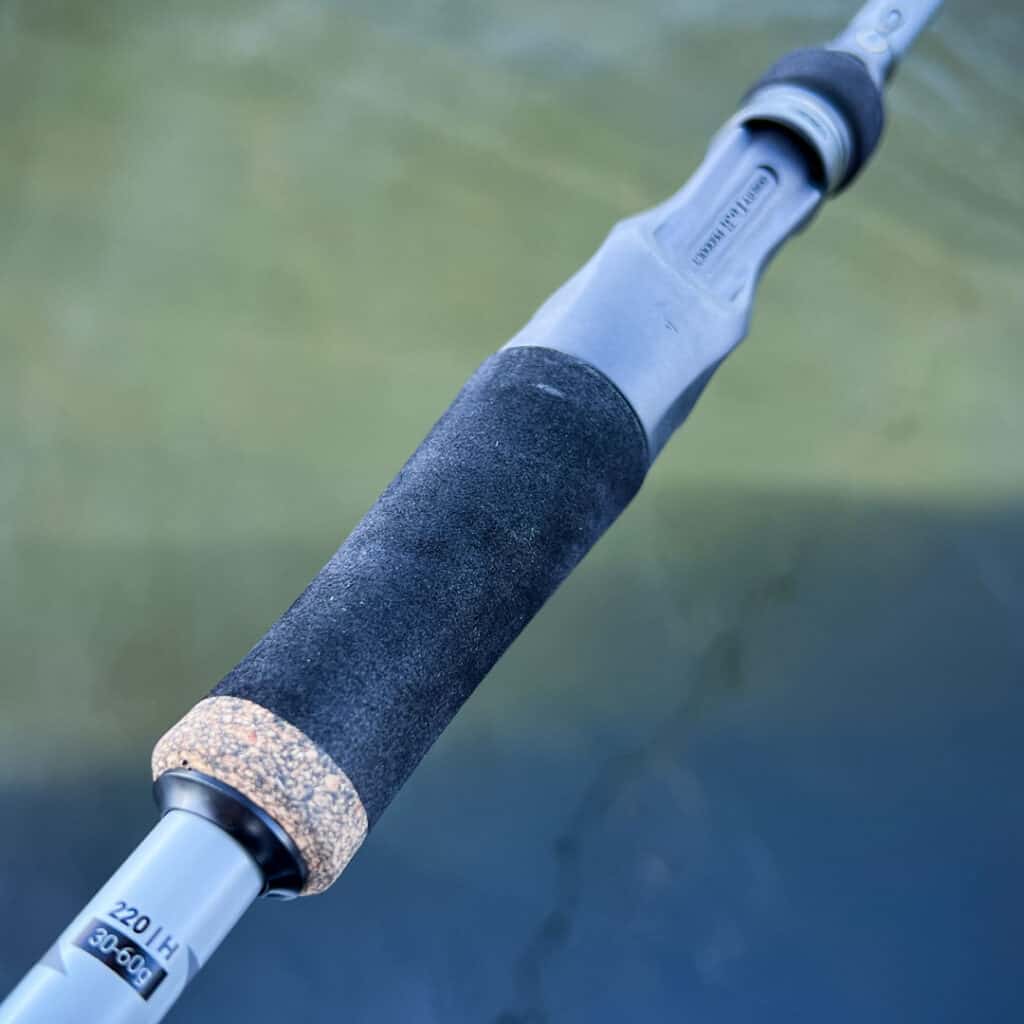
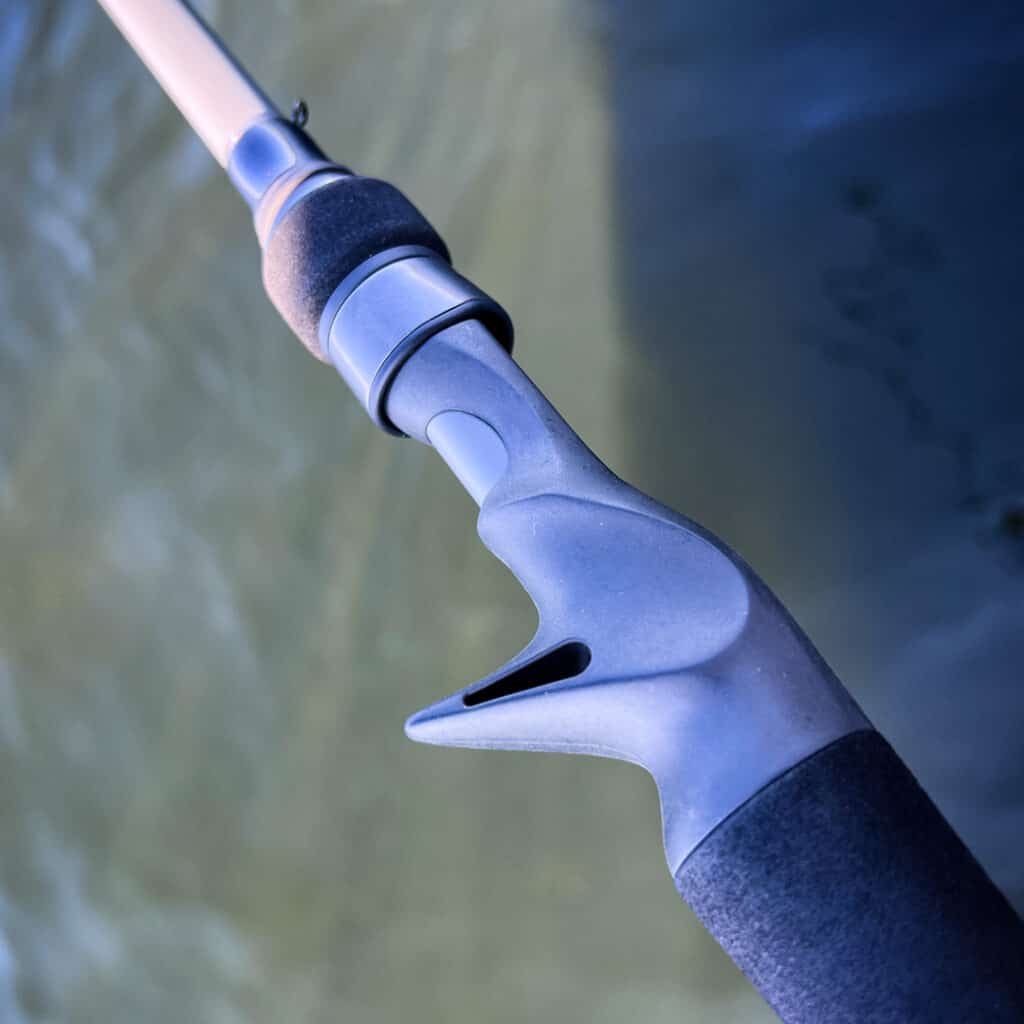
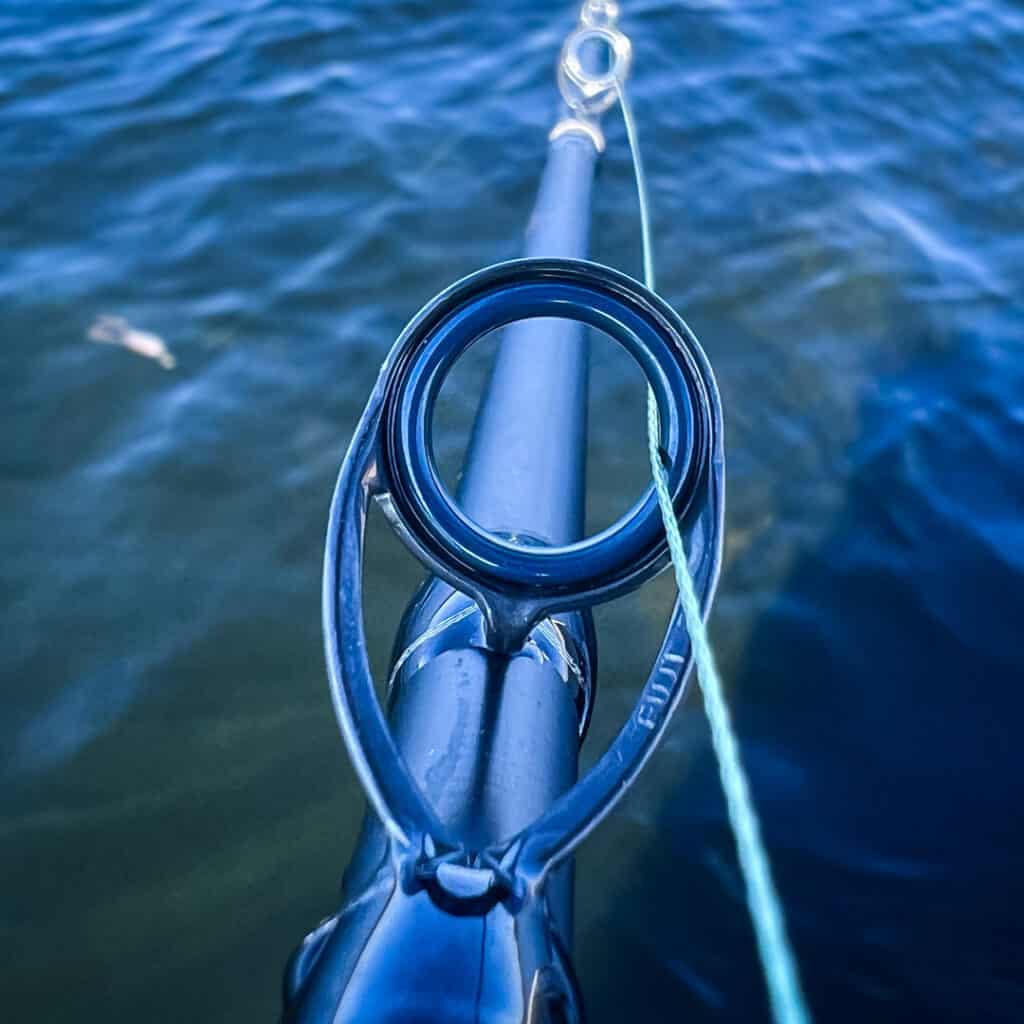
Fit and Finish
I think a person shouldn’t simply like their gear. Whether fishing, hunting, camping and so on. I think you should love it, and that means you’ll use it more often, take care of it and be proud of it.
From initial inspection, the Caperlan pike fishing rod exudes an excellent fit and finish. So much so that as its new owner, I can say I am proud of it, despite the low price tag. It’s also now part of my daily go-to selection of rods and is always on the boat.
After using the rod for an entire month and putting it through its paces, the takeaway is that it is very light and has a nice balance. It feels great and provides confidence that it’s correct for the application.
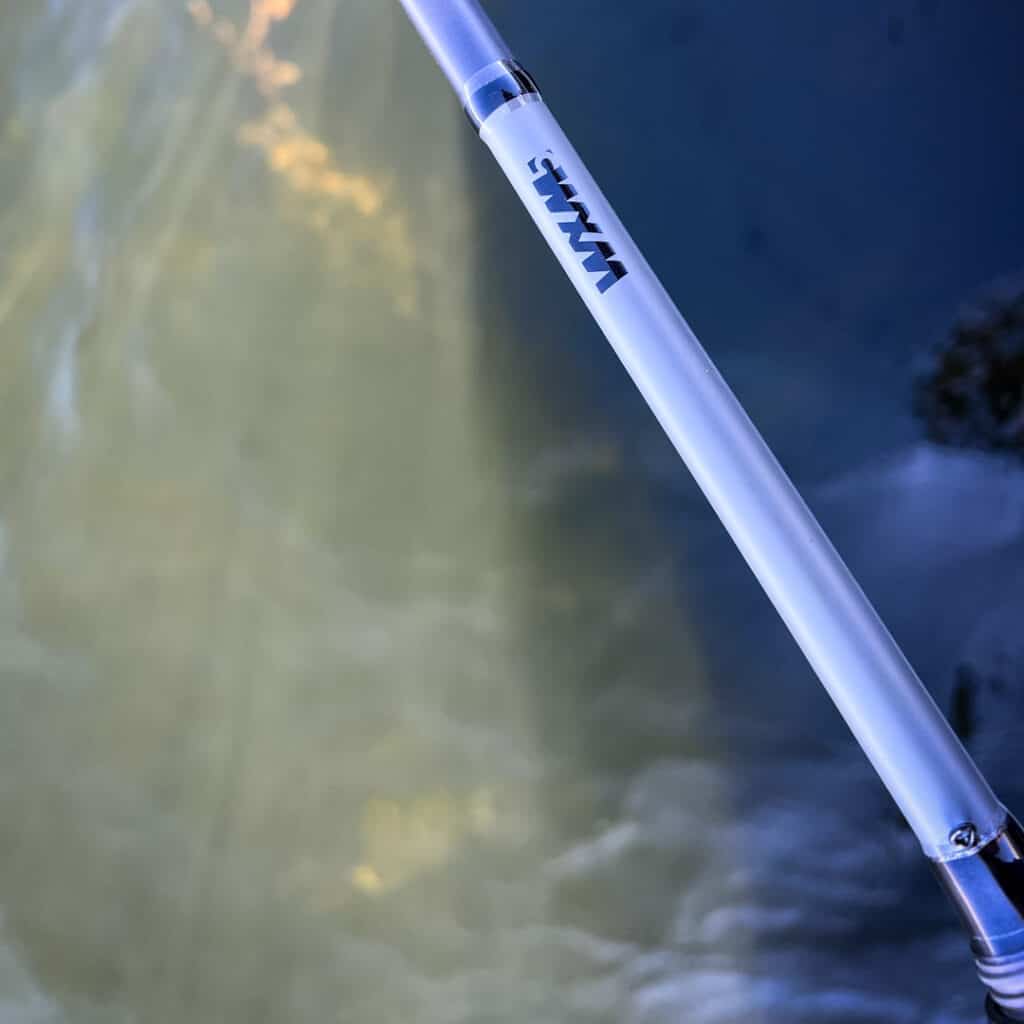

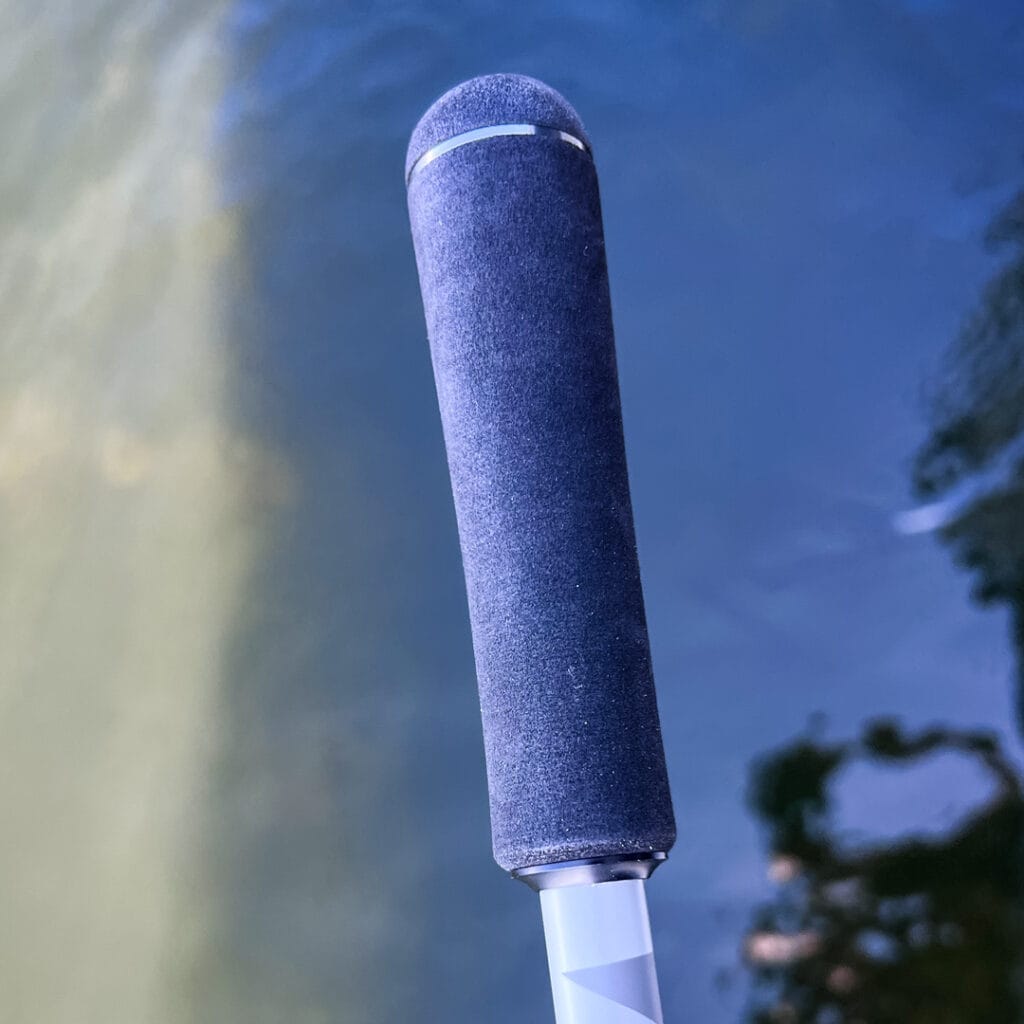
What Can You Really Use the WXM-5 Rod For?

The specs on this rod open up some doors as they suit multiple uses. Let’s look at a few main ones below.
Pike Fishing
Pike is known as an ambush predator. They are also known to be relatively aggressive. I like hitting them with top water or shallow diving lures like the Rapala X-Rap in red and white. Oddly, quite a few bass-specific fishing lures seem to work very well, including River2Seas Whopper Plopper. Then, you have the flashy variety of fishing lures from Cotton Cordell or your traditional spoons.
As to size, on average, pike is between 16-22 inches. Imagine a larger and more aggressive walleye. The maximum recorded length, however, is 59″ or 63 pounds! That’s a big fish, no matter how you look at it. I had a pike fishing day a couple of weeks ago and struck out thanks to sub-par fishing conditions between weather and too many boaters out and about. But, at one point, I saw a real monster swimming below the boat, thanks to the water’s clarity. Fishing pike can get pretty serious very quickly.
Decathlon nailed it when they pegged the Caperlan WXM-5 220 H as a northern pike fishing pole. I think it’s perfect for this variety of fish with lots of backbone in the rod to put up an awesome fight.
Muskie or Muskellunge Fishing
What Decathlon forgot is the pike’s big brother, the muskie. Well, sort of, as the rod is slightly underrated for muskie. But it would certainly get you by and then some.
I landed a muskie 20+ years ago fishing for walleye with a medium-fast rod pulling a homemade spinner and rubber worm rig. Ie. A 15-pound mono line on a rod that should have snapped in half. But instead of the line ripping, we opened the spool and let the fish run. The back and forth tired him out slowly. In hindsight, that’s not good for the fish, but it worked. While a great story, it doesn’t cover the other 50 incidents where a muskie snapped my line in seconds. So I bought a muskie combo last year, as it’s been too long since I landed one in the boat.
My muskie combo is an 8′ 6″ medium-heavy rod, rated for 3/4 to 3-ounce lures. The problem is it costs $290 and gets used half a dozen times a year. While we are not reviewing it here, it clearly puts the Caperlan rod into perspective, as not everyone has hundreds of dollars for each type of fish they want to target.
Fishing is also all about tradeoffs. An 8′ 6″ rod is a PITA to transport, especially a one-piece rod. It’s even a PITA to store as it almost touches the garage ceiling when verticle. However, the length compensates for stiffness when it comes to casting distance. So, we have to balance our choices based on our needs.
The Caperlan has the backbone to land a muskie easily, at least in my books. It can handle some of those bigger muskie lures, and I would wholeheartedly send the occasional muskie fisherman out with one of these. It won’t be perfect, but it will definitely get the job done.
Bass Fishing
Last night, I caught the usual pound-and-half-size bass with this rod on my second cast. It was on a 3/4 once riser bait ripping the surface with some top-water fishing. Surprisingly, it casts farther than expected, which is pleasant.
Let’s forget “getting by” for a second. Where this rod can EXCEL is with bass. Applications like pitching/flipping or frogging, which means heavy cover. When a bass strikes and pulls your lure through thick weeds, a 1-pounder can become a 10-pounder instantly. You need some backbone in the rod to yank a fish out of these situations, and this rod is perfect for it!
Pair the WXM-5 with some 60-pound braided line, and it’s an excellent frogging rod.
Reel and Line Recommendations for the WXM-5 Rod
Decathlon recommends a 300 series fishing reel for this rod, which is technically spot on. Can you get away with a 200, maybe? I prefer smaller reels myself as they are more palmable. But the risk is when you toss big lures on an undersized reel, you may wear out the fishing reel prematurely.
The second factor in reel size is line capacity. The bigger the reel, the bigger the line capacity. More fishing line can help if your fish becomes a giant runner, or if you prefer a heavier line, you can still get more of it on a larger spool.
The WXM-5 in my collection will be about 45/45/10. Ie. 45% for pike, 45% of the time as a frogging rod and 10% as a second muskie rod. So, instead of an 80# line, I’ll run a 60# braid. Perfect for frogging and also pike with the simple addition of a leader. And that speaks to the versatility of the rod.
Did We Mention It’s a Baitcaster?
We spent a week at a busy Provincial Park not long ago. EVERYONE was fishing, but we noticed 90% of the rods out there were spinning rods. They are by far the most common type of fishing rod. They are also the easier variety of the two main options to learn. In other words, spinning rods are the go-to for newbies, occasional anglers, and for finesse fishing.
But a spinning rod is technically a finesse fishing rod – think soft plastics like rubber worms, minnows, small jigs, etc. Any lure that is very light in weight suits a spinning rod. Anything past that, it’s time to get a baitcaster!
If you haven’t used a baitcaster, you might hate it at first. You need to set spool tension based on lure weight AND set whatever braking system the reel comes with. Get this wrong, and you’ll have a massive bird’s nest when casting. The spool itself spins on a baitcaster as it doles out line. When the spool spins faster than the line coming off, let’s just say you’ll have your hands full for a while on a de-tangling mission.
BUT once you gain experience in baitcasting, you’ll never go back! Both casting and stopping are controlled by thumbing the spool. This action stops the spooling in a split second. Ie. It becomes easy to cast almost any lure within a foot offshore! If you are SERIOUS about fishing or even want to go up a level, get a baitcaster! It’s a must-skill to learn.
You Should Switch Hands!
Let’s take a right-handed person as an example. On a spinning reel, you cast with the right hand and reel in with the left. On a baitcaster, you can cast with either hand. Typically, I use both hands and thumb with the right. Once casted, you hold the rod with your left hand and reel in with the right!!!
The theory is that the hand holding the rod is more of the “dummy hand” and the one reeling should be the dominant hand. Switching hands for baitcasting is what I do, as do most people. It is also the RECOMMENDED technique. But that’s not to say you can’t reverse things if that’s more comfortable for you.
What Reel Should I Use with the WXM-5?
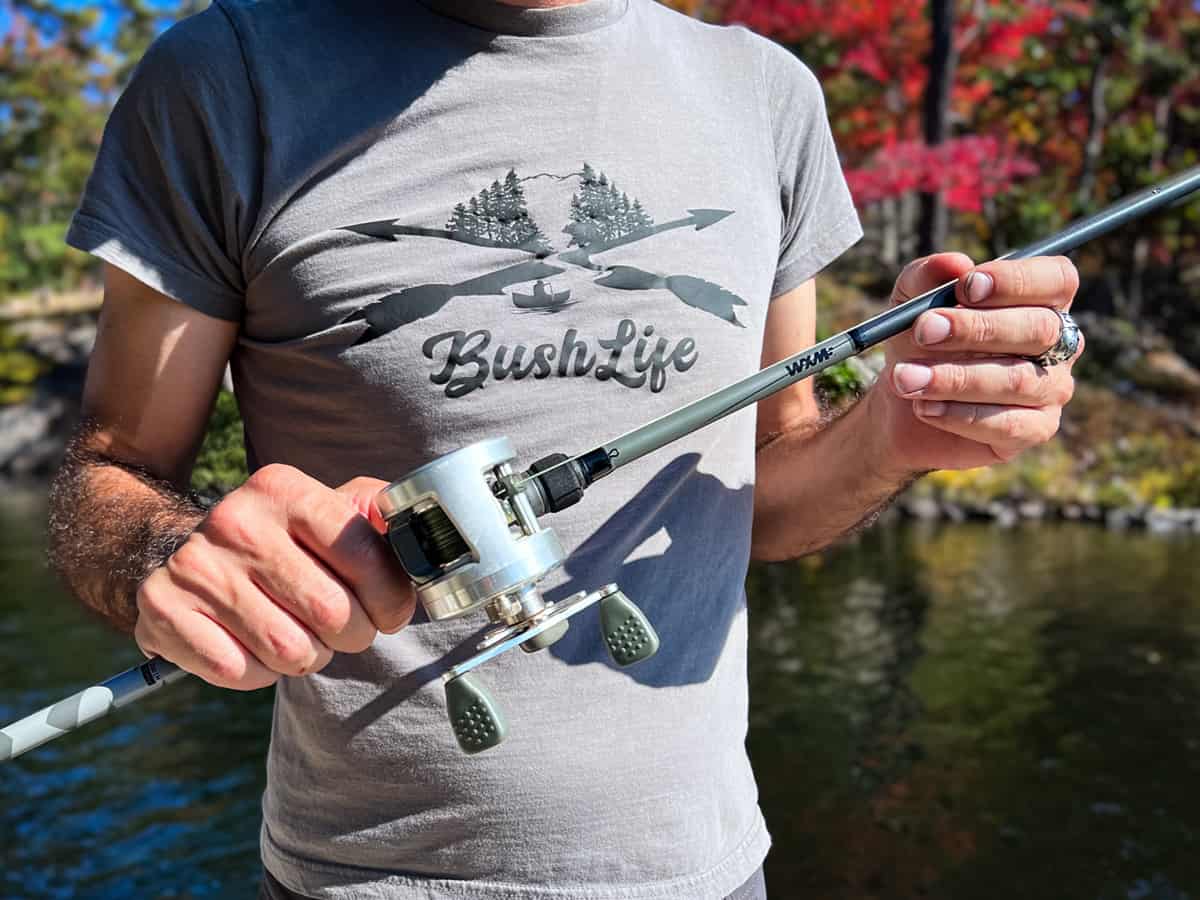
As Decathlon recommends, a 300 series reel is absolutely correct. It can handle the bigger lure weights, and let’s face it, there’s not much point in having a puny fishing reel on a beefy rod. Unfortunately, Decathlon only carries a 100-series reel. On top of that, it’s a left-hand retrieve, which will not suit the majority of anglers.
I use a Daiwa Tatula 300 on my muskie combo, and I can recommend that reel wholeheartedly for this rod. But it’s not very budget-friendly and comes in at hundreds of dollars. I paired this pike fishing rod with an old, lying-around Quantum US300 reel. You may find a similar fishing reel on the used market for around $30.
You’ll have to shop around on the reel side of things, and if you need guidance, our post on reel selection will help a lot. The main takeaway here is a 300 series baitcasting reel.
See it in Action
Final Thoughts on the Caperlan Pike Fishing Rod
The Caperlan WXM-5 220 H is an excellent pike fishing rod. It is also very budget-friendly and priced fairly. Perhaps the last item to mention is that it is a two-piece rod and comes with a neoprene attachment. This attachment keeps the two halves together and well-protected during transport – it’s also the first time we have ever seen a rod come with a protective sleeve of some form, which is a bonus. Pair the WXM-5 with a good reel and line, and you’ll be hauling in a monster in no time!
Disclosure
Decathlon graciously provided the Caperlan WXM-5 for us to review. BushLife, is not sponsored by Decathlon, nor have we received payment for this review. We have thoroughly tested the Caperlan fishing rod and have based this review on our unbiased opinion. Links to Decathlon and other products on our site do provide a small commission to BushLife at no cost to you. We appreciate you using our links and sharing on social media – it helps the blog immensely and allows us to keep great content coming to you.
Bookmark this post on Pinterest for future reference!
